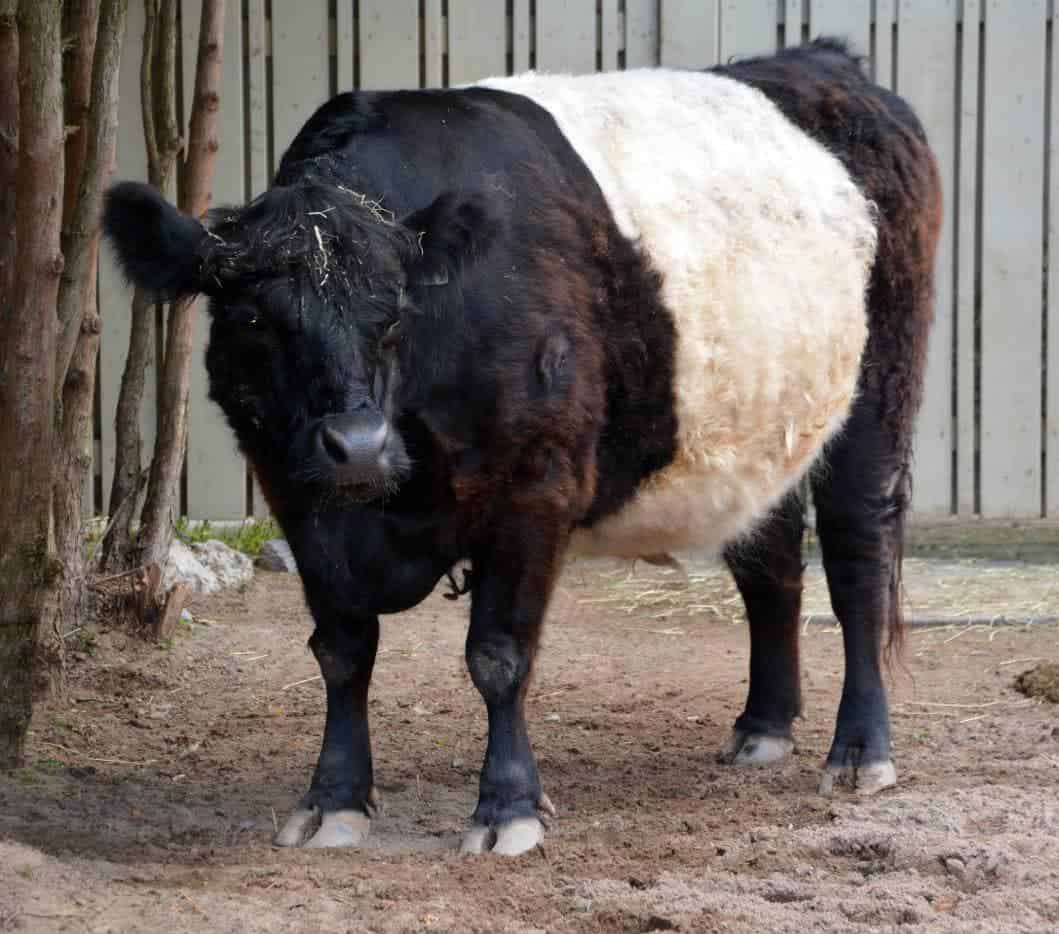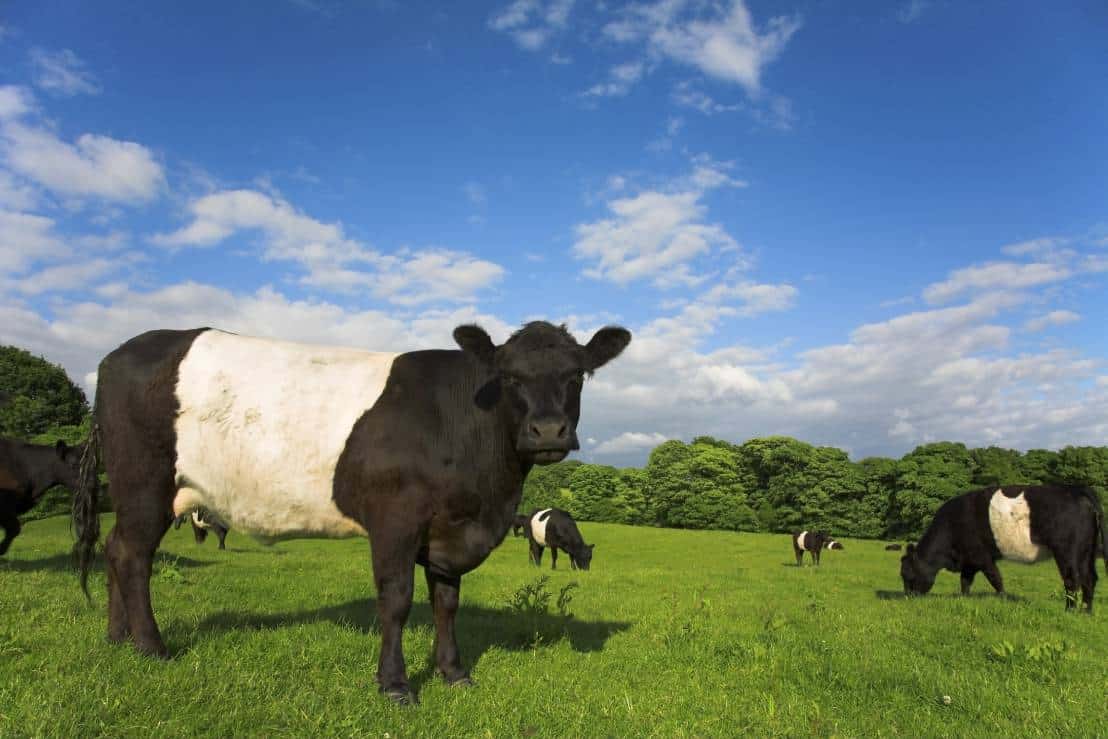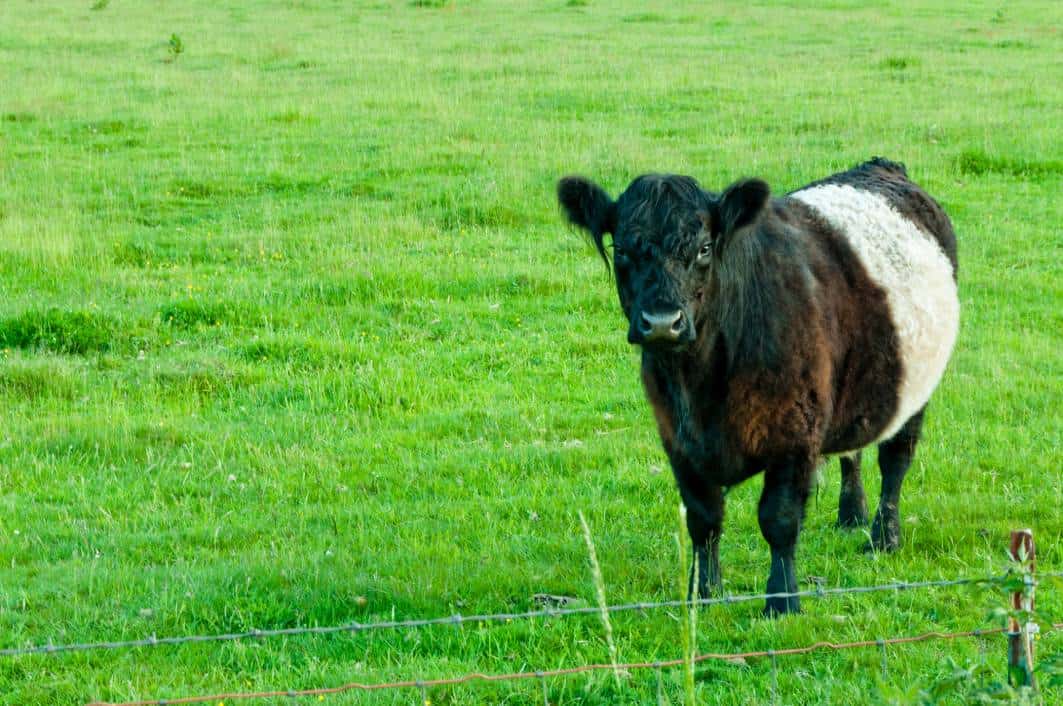The Belted Galloway, also affectionately known as a “beltie,” is a very distinctive cattle breed that stands out a mile. The “belted” portion of the name is in reference to the large white stripe or “belt” around the breed’s middle, with another color on either side, often black. The breed has its origins in the southwest of Scotland, or more specifically—the Galloway region.
In this article, we’re going to introduce you to this striking cattle breed. We’ll take you through the basics from exploring the breed’s origins to their habitat, diet, and the characteristics that make them so unique.

Quick Facts About the Belted Galloway
| Breed Name: | Belted Galloway or “Belties” |
| Place of Origin: | South-western Scotland |
| Uses: | Beef, vegetation management, milk |
| Bull (Male) Size: | 750–1,000 kg (1,600–2,200 lb) |
| Cow (Female) Size: | 450–600 kg (990–1,300 lb) |
| Color: | White, black, dun, red |
| Lifespan: | 17–20 years |
| Climate Tolerance: | Cold to warm climates |
| Care Level: | Moderate |
| Production: | Meat, sometimes milk |
Belted Galloway Cattle Breed Origins
The Belted Galloway hails from the Galloway region in southwest Scotland and descends from the Galloway cattle breed. It appears most likely that Belted Galloways were developed in the 16th or 17th century and were selectively bred to produce high-quality beef.
The origins of the white “belt” are somewhat murky, but it is likely the result of breeding between Galloways and Dutch Lakenvelder cattle.


Belted Galloway Cattle Breed Characteristics
The Belted Galloway’s defining feature is the distinctive white belt around the middle. They are also polled, which means they are naturally hornless.
Due to being adapted to tolerate the rugged, windswept southwest Scottish hills, the breed is also defined by its hardiness. They have double coats—the outer layer being shaggy and course to protect them from the cold and rain and a finer undercoat to help them keep warm. This means that those who raise Belted Galloways don’t need to spend a lot on accommodating this sturdy breed.
Belted Galloway calves grow at a rapid pace and as adults are even larger than the parent Galloway breed. In terms of temperament, the Belted Galloway is similar to other cattle—gentle and mild-mannered but cows, in particular, are highly protective of their calves.
Uses
Belted Galloways are by and large bred for their “marbled” beef and sometimes for their milk. However, some people keep Belted Galloways for other purposes, one of which is vegetation control. Belted Galloways can tolerate some seriously rough forage and large amounts of it, and as such make efficient living “lawnmowers” for dead vegetation.
Due to the breed’s unique appearance, some lucky Belted Galloways are raised by enthusiasts purely because of how nice they look in pastures! Their docile natures and low maintenance make them ideal for those who want to raise them for enjoyment. They can live for around 17 to 20 years, too.

Appearance & Varieties
Apart from the white belt, Belted Galloways are more often than not black but sometimes red or dun. In the summer, the black coat may lighten, producing a brownish tint. Their unusual coloring and markings have led to a few choice nicknames, including “oreo cow”, “panda cow” and “pig cow”.
A medium-sized breed, Belted Galloways usually weigh between 450 and 1,000 kg depending on gender, with males being larger and heavier than females.
Population, Distribution & Habitat
Belted Galloways often roam free in pastures, grasslands, and on hills, being durable enough to handle both cold and warmer climates. If you decide to raise them, they will need a wind and weather shelter but will spend much of their time grazing outside. They eat rough forage, so need access to plenty of grains, grass, and hay.
In terms of population, there were estimated to be approximately 17,000 Belted Galloways in the U.S as of 2019 and the breed isn’t considered to be at risk by the FAO.

Are Belted Galloways Good for Small-Scale Farming?
Most farmers that raise Belted Galloway only have a few of them, averaging ten or less. Many small-scale farmers successfully raise Belted Galloway and the breed is very popular with beginner farmers in particular. For one thing, their hardiness makes them easy to care for and they don’t require anything fancy when it comes to housing.
They’re also an easygoing, quiet cattle breed and therefore less intimidating for first-timers which makes them a suitable choice for those who want to keep them as pets.

Conclusion
Belted Galloway cattle are truly one-of-a-kind and it’s easy to see where the fascination surrounding them stems from. As well as being special and unique in appearance, Belted Galloways are also docile, peaceful animals that know how to weather a storm. They’re easy to raise and are sure to catch the eye of anyone passing your farm or ranch.
Related Read:
- Galloway Cattle Breed: Pictures, Facts, Uses, Origins & Characteristics
- Marchigiana Cattle Breed: Pictures, Facts, Uses, Origins & Characteristics
Featured Image Credit: Denise Lett, Shutterstock
